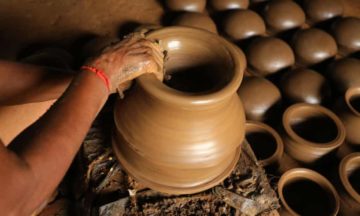Sana Goyal in The Guardian:
 Now at university in England, Sara looks back on her hometown in southern India. “This is the west,” where almost everything is within reach, but where she comes from, people have always known that “ordinary days can explode without warning, leaving us broken, collecting the scattered pieces of our lives”. Anuradha Roy’s carefully crafted fifth novel shows how, in such a place, things can change in extraordinary ways, even if new beginnings and worlds are hard to come by.
Now at university in England, Sara looks back on her hometown in southern India. “This is the west,” where almost everything is within reach, but where she comes from, people have always known that “ordinary days can explode without warning, leaving us broken, collecting the scattered pieces of our lives”. Anuradha Roy’s carefully crafted fifth novel shows how, in such a place, things can change in extraordinary ways, even if new beginnings and worlds are hard to come by.
Elango is a Hindu potter. His dream is to create a terracotta horse; his crime is falling in love with a Muslim girl, Zohra, and wanting the “unbridgeable crevasse” between them to close (“the space between the two was a charnel house of burnt and bloodied human flesh, a giant crack through the earth that was like an open mouth waiting to swallow him”). What follows is a story of love, loss and longing; tradition, creation and destruction; and the invisible lines that divide humans, animals and the divine.
Told between the first and the third person, the novel revisits themes that readers of Roy will be familiar with: myth, memory and history. As in her previous novel, All the Lives We Never Lived, she engages with the epistolary form. But it is Roy’s longstanding fascination with the figure of the artist, who fathoms new objects from what the earth has to offer, that is fully fleshed out in this novel. As Sara, the narrator, recalls: “A caterpillar had escaped a fire and turned into a butterfly, and my clay had become my first cup on a new wheel. Anything was possible.” What propels the book forward is this constant brink of possibility and potential for transformation.
More here.
